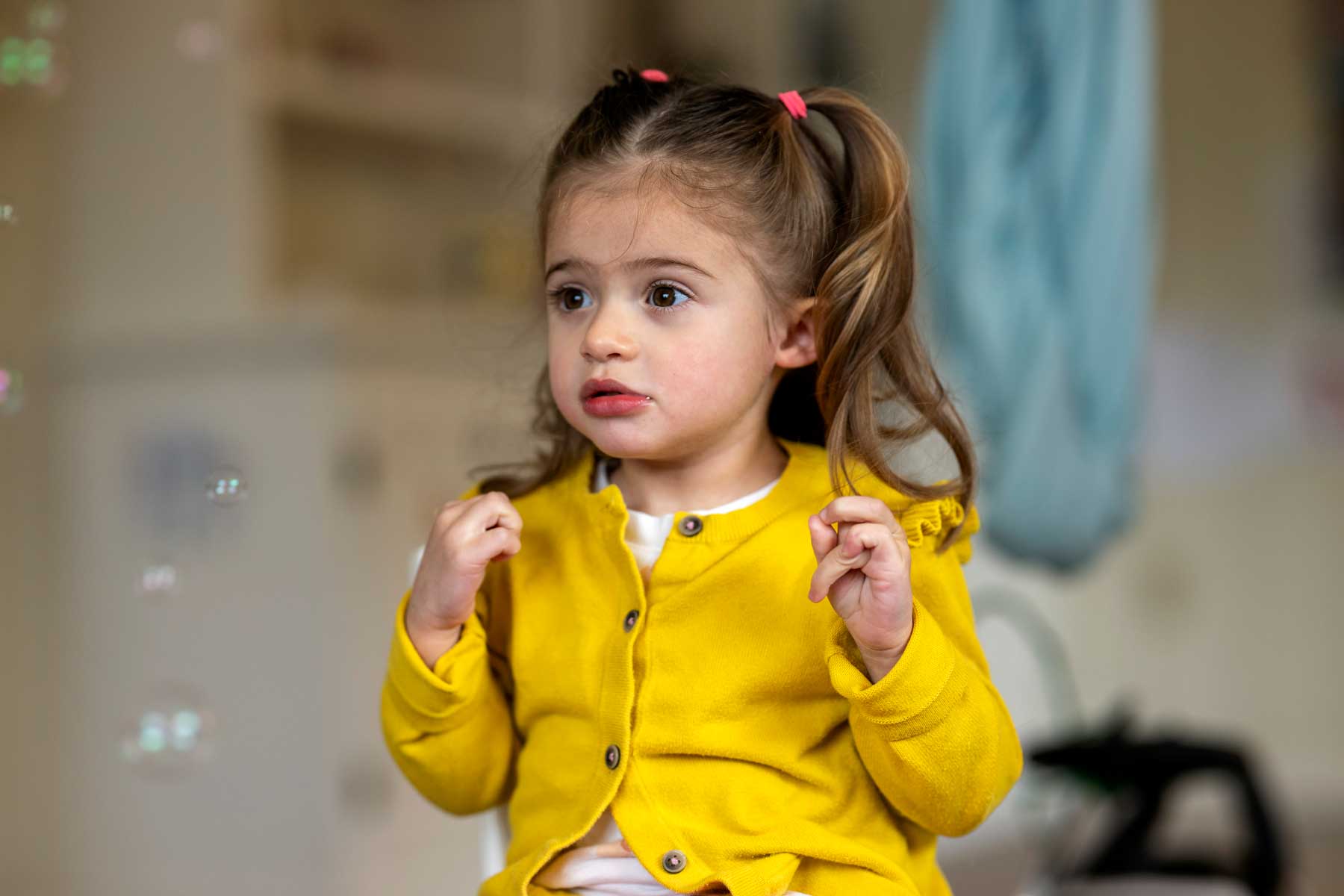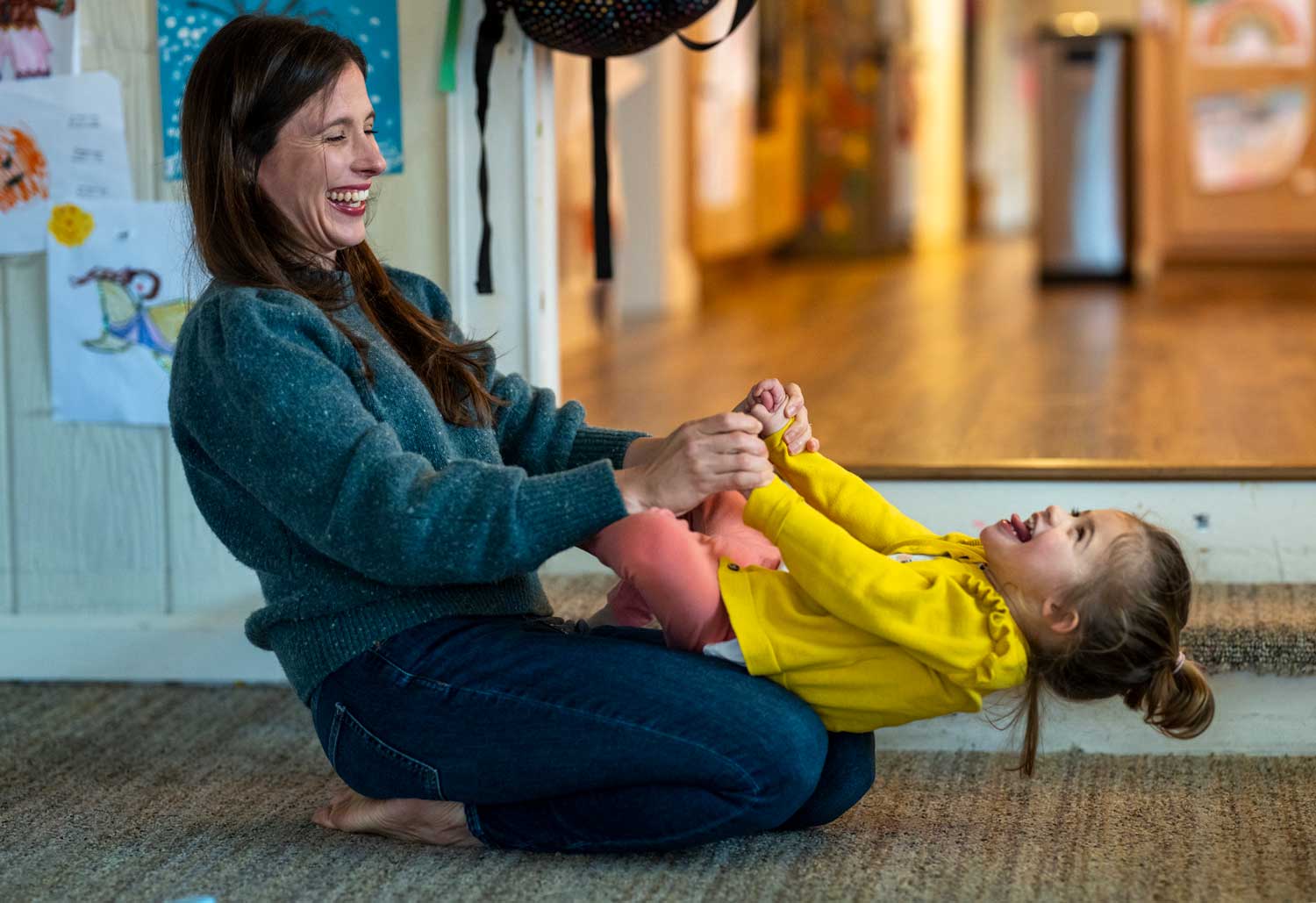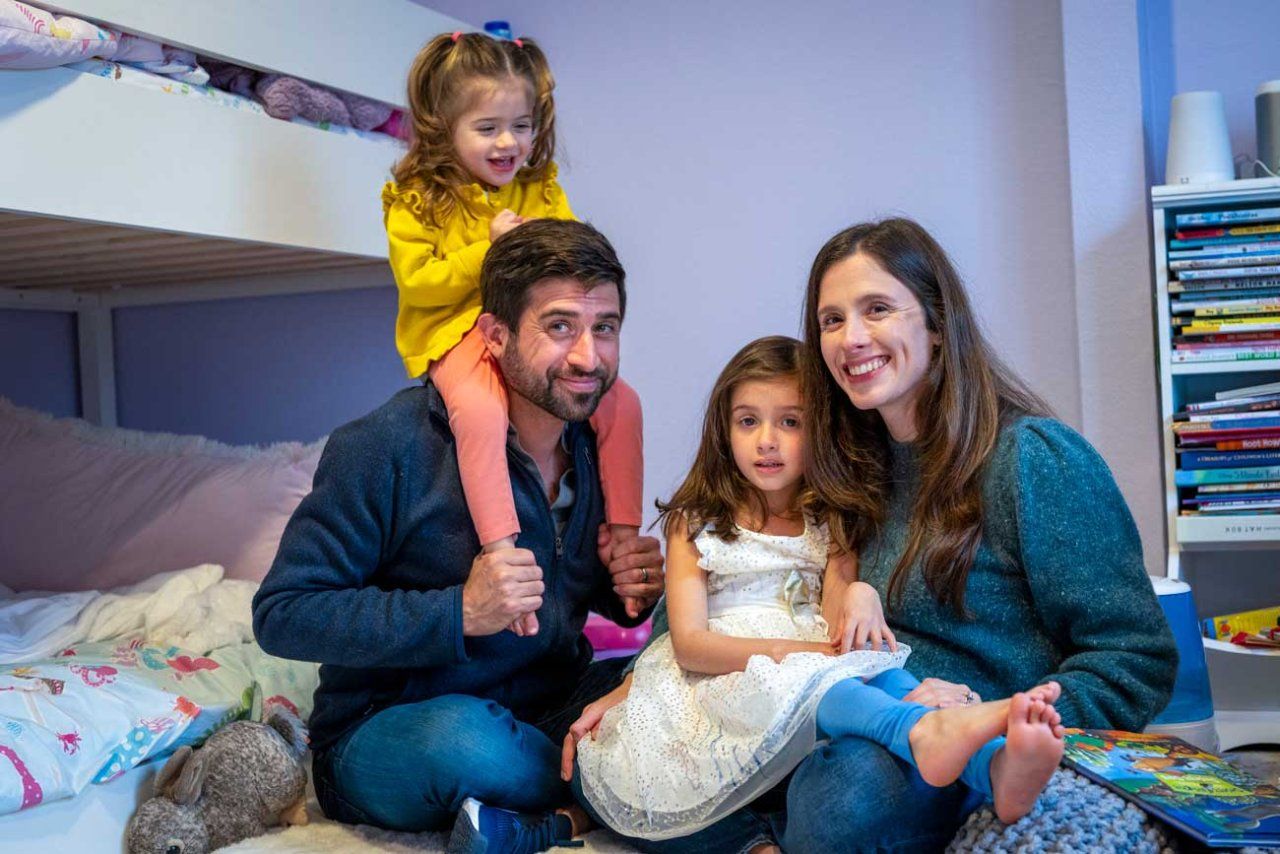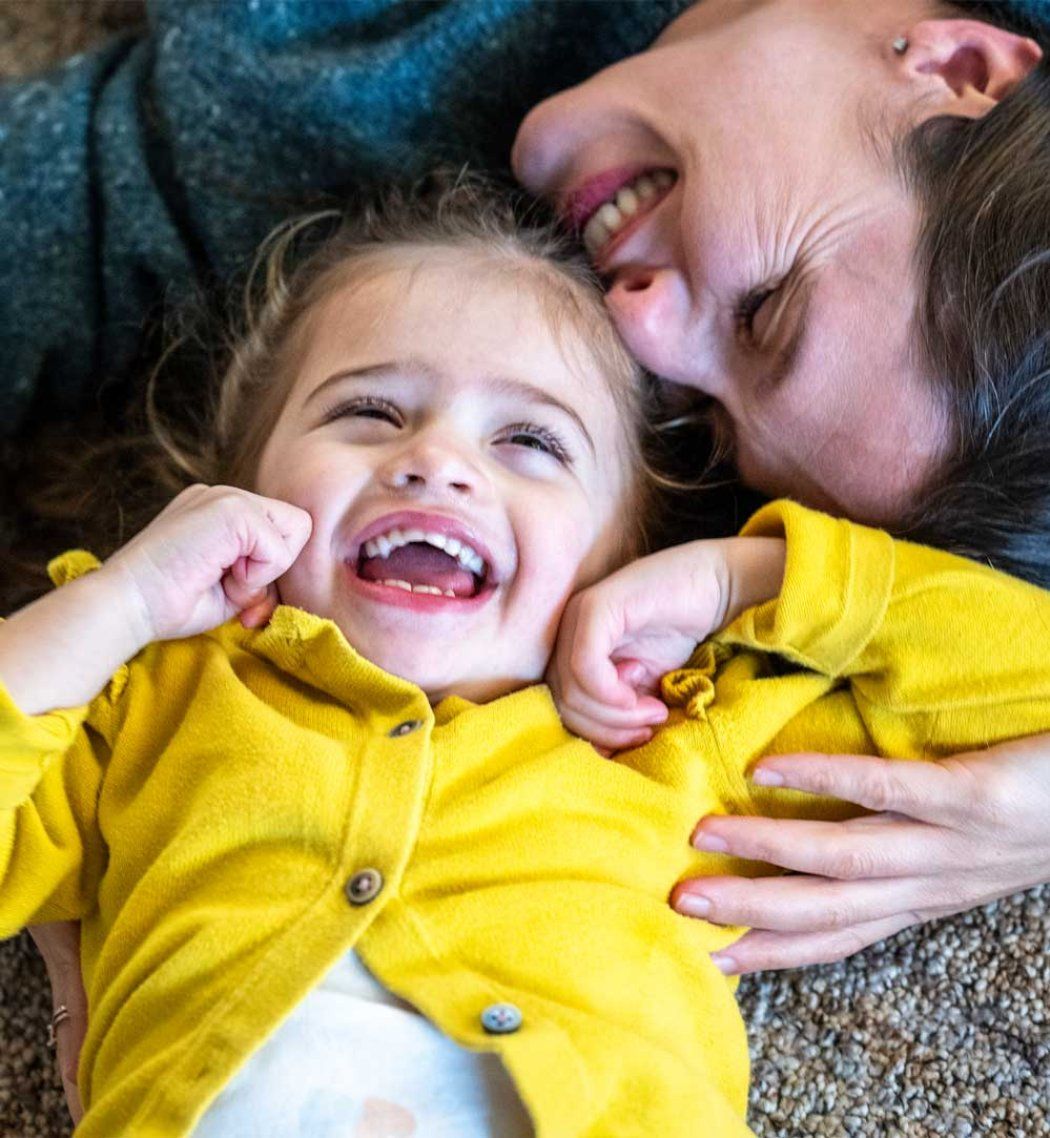Emiliana was an easygoing baby and a happy toddler who loved to smile, but her parents could tell something wasn’t right. She was late to learn to walk and when she was about 18 months old, they noticed she was regressing – losing milestone skills like clapping, climbing on play structures and responding to her name.
Concerned, Emiliana’s parents met with numerous doctors to figure out what was wrong. Their journey led to UCSF Benioff Children’s Hospital Oakland, where Katie’s Clinic for Rett Syndrome provides special multidisciplinary care for their daughter’s rare condition as well as a new medication that is improving her life.
During an evaluation for autism, an occupational therapist noticed that Emiliana didn’t move her hands the way most children her age did, and she recommended Emiliana undergo genetic testing. The results revealed she had Rett Syndrome, a rare genetic neurological disorder that prohibits proper brain development in young girls. The condition – caused by a mutation on the X chromosome – is found in one in every 10,000 female newborns in the U.S.; and about 15,000 girls and women have Rett Syndrome in the U.S.
The syndrome leads to severe impairments, affecting nearly every aspect of the child’s life: limiting their ability to speak, walk, eat and even breathe easily. While Rett Syndrome patients have a broad range of abilities, most don’t progress cognitively past elementary school age. Hand-wringing and repetitive hand movements, which the occupational therapist saw with Emiliana, are some of the most telling symptoms.

Groundbreaking treatment
Emiliana’s parents, Giancarlo Gialle and Nina Padula, were initially devastated by the diagnosis. “It was a shock to me, but it was a little relief to have answers. I’m grateful for science and understanding of genetic mutations,” said Padula. “We’re not going to let her diagnosis define her. Emiliana will show us what she can do, we’re not going to put her in a defined box.”
One of only 18 International Rett Syndrome Foundation Centers of Excellence in the U.S., Katie’s Clinic provides a team approach to the multifaceted needs of patients. Treatments are led by a neurologist with help from a pediatric nurse practitioner who coordinate care. A patient’s care team may also include specialists in medical genetics, orthopedics, gastroenterology, physical or occupational therapy, speech therapy and nutrition.
Katie’s Clinic is named for Bay Area resident Katie Nues, who was first diagnosed with Rett Syndrome in 2004. At the time, her parents had to fly her to Texas for treatment at what was then the closest Rett Syndrome clinic. After seeing the robust care available there, they started the Katie Nues Foundation and worked with UCSF Benioff Oakland to open the first Rett Syndrome Clinic on the West Coast. Twenty years later, the clinic serves about 50 patients a year, many of whom travel from places like Colorado, Utah and Oregon, and even internationally from Dubai, Mexico and the United Arab Emirates.
“At Katie’s Clinic, we help families navigate getting their children the best care possible,” said Jennifer Martelle Tu, MD, pediatric neurologist and director of Katie’s Clinic. “They don’t know what they need since it’s the first time they’re doing this, and their needs will change as their child grows up. We tap into our experience with patients at different ages and degrees of disability.”
One groundbreaking treatment they prescribe is Daybue, the first and only medication for Rett Syndrome. Just approved last year, the oral medication improves the strength of neuronal connections.
“Daybue makes it possible to get more signals out of the brain and enables patients to be more alert, aware and engaged,” Tu said. Daybue typically makes communication easier, helps patients engage more with their surroundings, improves their attention span, makes them more stable when walking and empowers them to make more reliable choices, she explained.
The Rett Syndrome team and patients at UCSF Benioff Oakland played important roles in initial testing and tolerability studies for Daybue. Now they are working with Daybue researchers on clinical studies to evaluate its effectiveness and impact of dosing and side effects.
Already seeing incredible improvements
“Going to Katie’s Clinic the first time is one of the most memorable days in our lives,” said Padula. The Gialle family is grateful to live only 15 minutes away from UCSF Benioff Oakland, where they meet with a neurologist, physical therapist, dietitian and nurse practitioner, and are building a community of Rett Syndrome families.
“We’re grateful to be part of the UCSF system since they are in the know when it comes to research,” said Padula. “During our clinic visits, we get to have lunch with other patients’ families, and we’ve met lifelong friends through Katie’s Clinic, which is extremely special. We joke that it’s the best community you’d never want to be a part of.”
Emiliana started taking Daybue in August, and her parents already see incredible improvements. She’s able to follow commands in a new way, which is helpful at home and preschool. She’s more energetic and now lasts a whole physical therapy session, where she used to fall asleep in the middle. Her gait has improved, and she’ll grab her parents’ hands in a new way.

She is also able to communicate more effectively now, gaining more control of her adaptive communication devices, which she received from the Katie’s Clinic speech therapy team. With one device, Emiliana uses her eye movements to select from a menu of pictures and words on a tablet, which then speaks out loud. Since taking Daybue, she is able to share more with her family about what she wants and needs, voicing words like “Mom,” “stop,” “water” and more.
“To someone without Rett, these things might be no big deal, but to us, they are. As Emiliana is getting older, her needs and thoughts are getting more complicated. It’s amazing to see her be empowered, to see her creating her personality and being able to show it to us,” Gialle said. “With Daybue, we’re also hopeful she’ll be able to feed herself and continue to walk.”
The Gialle family and Katie’s Clinic team are optimistic about Emiliana’s future and that of other Rett Syndrome patients around the world. “UCSF makes it known that there’s so much value and importance in studying and treating rare diseases,” Tu said. “Even though it’s a small group affected by one rare disease, if you find a mechanism for treating one rare disease, it might be directly applicable to several other rare diseases.”

